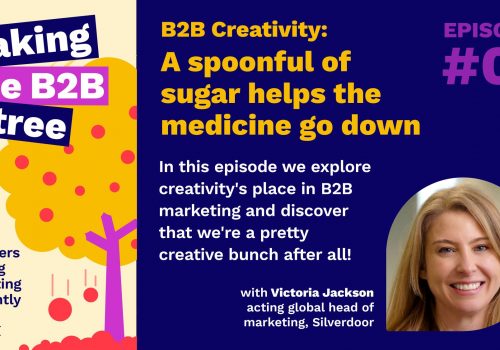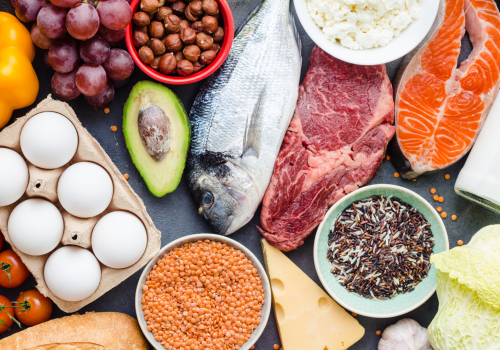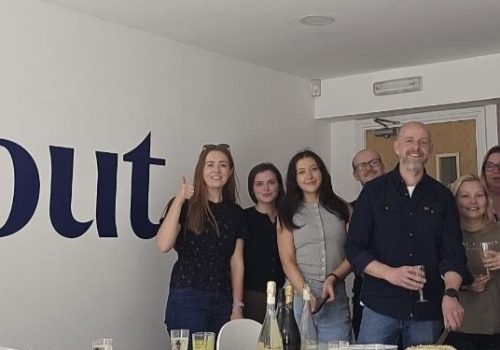Simple steps for B2B marketers on content gating etiquette
Did you know an estimated 80% of B2B marketing content assets are gated – requiring the recipient to ‘pay’ for access by handing over their personal details? I was shocked to see this figure and think it indicates a lack of proper thinking around how organisations can make their content assets perform best for them.
Here’s a simple comparison. Imagine your favourite free source of news suddenly stopped you accessing 8 out of every 10 articles they published? You’d probably think this was a turn-off. Even though some newspapers have opted for a fully paywalled route, these are big news brands that have distinct loyalty from customers who, before the world went digital, were happy to pay for ‘paper’ news each day of their lives.
Your B2B brand is not in the same boat. You’re bobbing around in the water with thousands of others trying to catch the eye of the prospective future buyer. If you restrict their view with too much gating, they will simply give up.
There are many ‘to gate or not to gate’ debates out there. In my view it is not a simple do or don’t answer. While you may feel that un-gating content will result a loss of leads, you may well find that it can increase both the volume and quality of leads you attract.
Gating is something which requires a strategy all its own. A good place to start is with the simple steps of Who, What, When, Where and Why?
WHO are you targeting?
The profile and status of your marketing campaign recipients plays as key role in determining whether content should be gated or not. If you’re targeting an undefined audience by placing a content asset on your website, for visitors to find organically and by promoting it naturally via social media, it may seem sensible to gate it. This allows you to capture data/opt-ins and gradually build your top of funnel leads. Alternatively, if a content asset is being used as part of a nurture process to a defined leads database and being promoted through trackable methods such as email marketing or marketing automation, keeping access ‘free’ may be best. However, a campaign might have multiple audiences at different stages of the buying cycle. For some, gating may be appropriate. For others, it may not be.
Tip – before you even create your content, ensure you have clearly defined audience personas, know who you’re targeting and how they are likely to react and engage with your content asset.
WHAT content are you sharing?
These days marketing content comes in many shapes, sizes and styles – from visual to audio to written word, and from in-depth educational guides to simple one-minute videos. If you have a sound content strategy in place you should already have built strong foundations for your campaign. However, it is important to consider how accessible a piece of content should be, based on what it is and what level of benefit it provides to the recipient or viewer. A lot of this is common sense; as a rule – frequent ‘snackable’ content that serves as bite sized engagement is probably not something to gate. The pieces you should consider gating are those that provide real depth of value – new research data, a personalised report, a calculator tool or educational information. It’s a fine balance, however. For example – a website that is full of great, in-depth content assets that are all gated could make you appear more unhelpful as a brand than if the content wasn’t there at all.
This Parqa Marketing blog has a useful list of gated vs ungated content.
Tip – Fundamentally, think about how much value there is in your content. Is there enough to make people ‘pay’ to see it by opting in?
WHEN are you sharing it (along the customer’s journey)?
Mapping content across the customer journey, from initial awareness to purchase, can also help you determine whether to gate or not. The popularity of account-based marketing (ABM) means marketing organisations are reducing their focus on ‘broadcast’ content strategies. Increasingly they are looking to use specific pieces of content to nurture individual key accounts at critical points in the journey.
This greater fluidity in the approach to content may well mean you need to think differently about whether to gate or not. As a sector, we have traditionally thought of gating in black and white terms; a content asset was either free or it wasn’t. But why does this have to be the case? Airlines let their priority customers get stuff for free in airport lounges where others must pay. The same can apply to your content – depending on where a potential buyer is in the journey and how valuable they are to you. In this situation, giving selected leads a key to unlock a piece of gated content offers the best of both worlds; you can still keep the content restricted for the ‘general public’ but add value to your premium prospects by letting them know you are giving them a freebie.
Tip – think about ‘when’ in the sales cycle a piece of content is likely to play its part to determine whether you want to gate it or not. Also consider individual key account journeys – different rules can apply to different prospects.
WHERE are you sharing it (in terms of channels)?
Imagine you’ve just created a fantastic piece of ‘pillar’ content – the kind of thing you’re going to want to promote and share across as many channels as possible. All roads lead back to an enquiry form on your website with the asset hidden away behind it. Despite mammoth efforts and considerable budget going into the sharing element of your campaign, downloads are surprisingly weak.
It’s worth remembering that people might react to your content differently, based on where they read or hear about it. Your gating strategy might need to be tailored in line with this. Here’s an illustration across some typical ‘channels’:
Events – ‘conversational gating’: If you’re exhibiting at an industry event and you’re talking one to one with prospects, it’s perfectly reasonable to capture their details with the offer that you’ll send them the content as a follow-up. The conversation should warm them up to this (or not as the case may be).
Email – ‘hidden gating’: If you’re sending targeted emails to an already opted in database of leads who have expressed a preference to receive content, you probably shouldn’t point them to another gate. You need to use the tracking functions of an email or marketing automation platform to gather data about what they did.
Press articles – ‘staged gating’: If you’ve generated media coverage around your content including links back to the relevant landing page, the reader’s interest may be high, but the article may not ‘sell’ the content sufficiently to encourage successful opt-in downloads. You may need another stage in the process, such as a landing page with strong feeder/snacking content such as a video to watch or a benefits summary of what your pillar content will give the recipient.
Syndication – ‘endorsed gating’: If you’ve used a syndication or marketing partner to spread the word, such as a sector publication, you have the benefit of their brand endorsing your content in the eyes of the recipient. This may well make the conversions and returns generated from hard gating more fruitful than on other channels.
This blog from CoreDNA has some great insights into the complexities of content gating in different situations and for different goals.
Tip – Channels make a difference to how people will respond to your content and whether they will want to unlock the gate! You need to take a dynamic, rather than a one size fits all, approach.
WHY are you sharing content?
Clever organisations recognise that not all content is there to generate immediate prospects. The power of content is often around building targeted awareness of your brand and its solutions rather than hard ROI. Content is also critical to SEO and if it’s all gated its impact here will be restricted. These alternative goals are often overlooked, especially when marketers focus too soon on the end game of sales rather than the critical warming up process. It’s important to think about the objectives behind your content asset. If it’s awareness, you’ll probably want to keep it ungated to maximise the number of people who see it and download it. However, you could still build in ‘feedback mechanisms’ to try and gather data in a softer way. These could include timed pop-ups that ask the viewer to subscribe to further updates once they have read a piece of content, voting buttons or CTAs that trigger an enquiry or lead capture as part of the content process.
This HubSpot blog provides great insight into what happens when you un-gate gated content (however, you’ll notice that the second half is actually gated )
Tip – keep your primary marketing objective clear. Also consider if you can take a more hybrid approach to gating. You could make half a piece of content free but gate the second half when people are engaged with it
There’s much more to content gating than meets the eye – or could be included in this blog. So, we may return to the issue soon!












